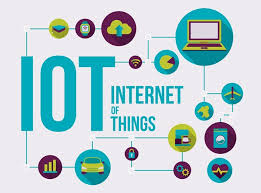Privacy-by-design principles can be implemented in IoT systems to ensure privacy considerations are embedded throughout the design and development process. Here are some examples of privacy-by-design principles for IoT systems:
- Data Minimization: Collect and retain only the necessary data required to fulfill the intended purpose. Minimize the collection of personally identifiable information (PII) and avoid collecting excessive or irrelevant data. This principle reduces the potential privacy risks associated with storing and processing sensitive information.
- Consent Management: Implement mechanisms to obtain explicit and informed consent from users before collecting and processing their data. Provide clear and transparent information about data collection, usage, and sharing practices. Offer granular consent options, allowing users to choose the specific types of data they consent to share.
- Anonymization and Pseudonymization: Apply techniques such as anonymization and pseudonymization to protect user privacy. Anonymization removes personally identifiable information from data, while pseudonymization replaces identifying information with pseudonyms. These techniques help to minimize the risk of re-identification and maintain data privacy.
- Security Measures: Incorporate robust security measures to protect IoT devices, networks, and data. Employ encryption, access controls, secure authentication mechanisms, and secure communication protocols to ensure data confidentiality and integrity. Regularly update and patch devices and systems to address security vulnerabilities.
- User Control and Transparency: Provide users with control over their data. Offer user-friendly interfaces and tools that enable users to manage their privacy preferences, review and modify their data, and exercise their rights. Ensure transparency by providing clear information about data collection, processing, and sharing practices.
- Privacy Impact Assessment: Conduct privacy impact assessments (PIAs) during the design and development of IoT systems. Assess the potential privacy risks and impacts associated with the system and implement measures to mitigate those risks. PIAs help identify and address privacy concerns proactively.
- Secure Data Storage and Retention: Implement secure data storage practices to protect user data from unauthorized access or data breaches. Use encryption, access controls, and data loss prevention measures to safeguard data at rest and in transit. Define data retention periods and establish processes for secure data deletion when no longer needed.
- Regular Audits and Compliance: Conduct regular audits and reviews to ensure compliance with privacy regulations and internal privacy policies. Monitor and evaluate the effectiveness of privacy controls, identify gaps or vulnerabilities, and take corrective actions. Stay up to date with evolving privacy laws and adapt the system accordingly.
- Privacy Training and Awareness: Provide privacy training and awareness programs for employees involved in the design, development, and management of IoT systems. Ensure that they understand privacy principles, best practices, and their responsibilities in protecting user privacy.
- Privacy-Focused Partnerships: When working with third-party vendors or partners, ensure they adhere to privacy principles and have appropriate privacy and security measures in place. Establish clear agreements and conduct due diligence to ensure data handling aligns with privacy-by-design principles.
By incorporating these privacy-by-design principles into IoT systems, organizations can proactively address privacy concerns, protect user data, and build trust with users. It is essential to consider privacy as a fundamental aspect throughout the entire lifecycle of IoT system development and operation.
SHARE
